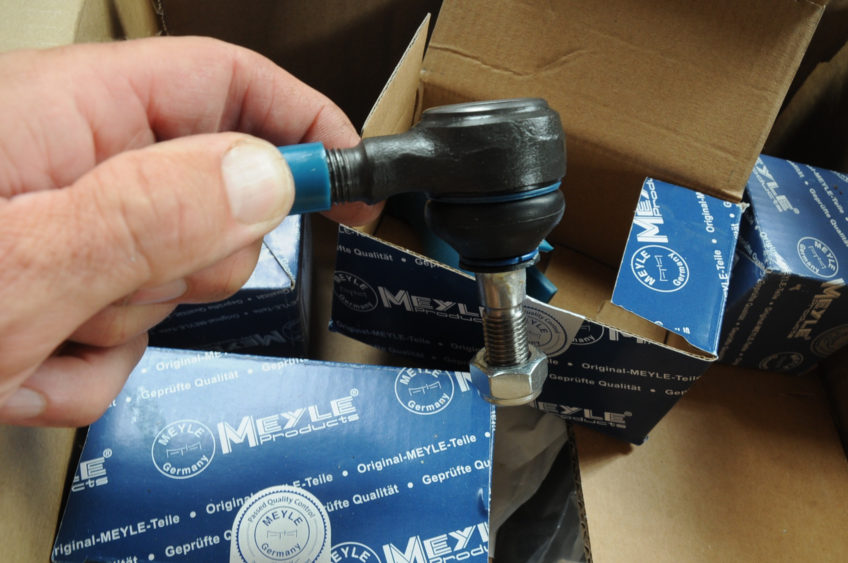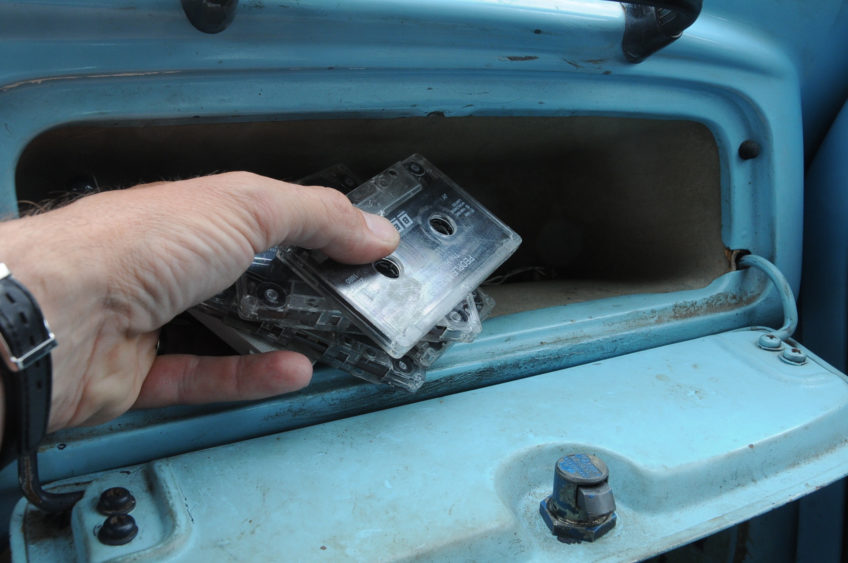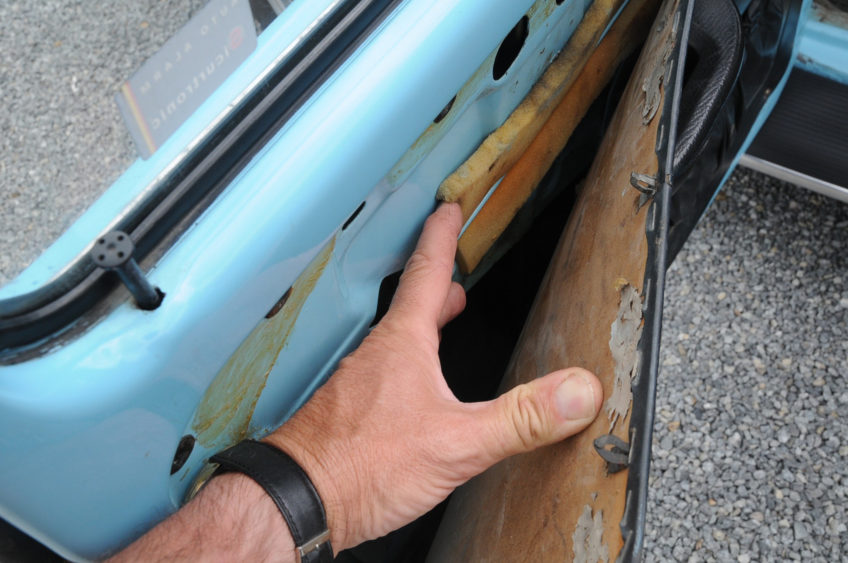You can expect a few crash, bangs and the occasional wallop when driving an older car, but annoying rattles can ruin an otherwise nice drive while other noises can indicate something’s wrong or badly worn. Here’s a quick guide on what to listen out for the next time you take to the open road in your VW…
Tracking down annoying noises isn’t always easy, especially if there’s a cacophony of different clatters, creaks and groans – a single jangle or knock is much easier to source and hopefully eliminate.

If you start to struggle, it might help to have someone else with you to sit in different parts of the car and focus their attention on precisely where the din is coming from while you’re at the wheel. Some noises will be relatively easy to get rid of, especially if it’s due to loose or missing fittings. Other nuisance noises will point to maladjustment or wear and might necessitate further investigation and a subsequent workshop visit.
Noise up front
There’s a good chance that groans and knocks from the front end of the car will originate from a suspension component. A broken front coil spring is difficult to spot, but if you hear a clunk as you mount a lowered kerb, then it’s worth having a closer look with an inspection lamp. If you hear lots of creaks, suspect a worn or bone dry spring eye bush. Track rod ends produce a more delicate sound, accompanied by play in the steering. Turn the wheel from lock to lock while stationary and listen out. A heavy thud could be the shock absorbers, although it’s worth checking the top and bottom fixings before swapping them for new units. Balljoints and kingpin set-ups (on air-cooled VWs) can also knock and thump when worn and it’s important to keep the front torsion bar well greased to avoid squeaks.

Still at the front, a metallic scraping that gets worse when braking is likely to be worn out brake pads on a car with discs. If it’s intermittent, the discs may be warped. Meanwhile, a rattle on a disc brake arrangement might mean the wire clips holding them in place have broken or come off altogether. Rattles from the back brakes can often be traced back to the handbrake expander bar – the clip’s probably come off, or it’s been put on the wrong way. A constant whirring or hum from the front (or rear, for that matter) is most likely the result of a past its best wheel-bearing.
Exterior rattles
If you notice any rattles outside (at low speeds with the windows down, most likely) then systematically go around the car and check bumpers, grilles and other fittings and fixtures, tightening up any lose bolts that you find. Some wind noise is expected on older VWs, but if it’s excessive suspect missing/badly fitting rubber seals. Spanking new rubber seals to cut down the noise are readily available. Doors and tailgates can thump and bang over rough road surfaces if they’re not properly aligned, the striker plates don’t hold them tightly against the seals or the rubber seals themselves are missing/worn or perished. Simply losen them off, adjust them so the door/tailgate closes better, then do them up again.

Exhausting stuff
On front-engined water-cooled VWs, a loose exhaust is often to blame for heavy knocking underneath, usually when driving over speed bumps or when pulling away. Here’s it’s a case of getting the car up on strong axle stands and checking that all the rubber hangers are in place and that the exhaust is routed properly. It might be a case of slackening off the clamps, rotating certain sections, then tightening everything up again so it’s more secure.
Dashboards/electrics
General tat in door pockets, gloveboxes and centre consoles can irritate on a long journey when it crashes around. Make a point, therefore, of having regular clear outs – keeping only the essentials in the car. Dashboards can flex and when they do, the instrument panel can shudder and shake. Once you’ve worked out where the noise is coming from, try inserting tiny bits of folded electrical tape or foam in between the gaps to stop it. The fittings securing the dash may have come loose, so check their tightness. Look out too for loose wiring which can cause buzzing and tapping as you trundle along. Again, cable ties can help restore the silence here.

Engine noises
Diagnosing specific engine/gearbox noises is a subject that deserves its own blog, but if the rubber mounts that hold the engine and transmission in place wear, they will cause an awful knocking – especially when coming off the clutch. Worn engine/transmission mounts can also cause vibration through the bodyshell that will prove miserable on a long drive. Most mounts are generally pretty straightforward to replace, so there’s no excuse for putting up with rubbish ride quality.
Door rattles
People often remove doorcards to fit speakers, sort broken glass or window winder mechanisms, and when they do the fittings often get lost or broken. If the door trim is not properly secured, it will clatter to kingdom come. Rods and cables in the door can also make annoying tinny sounds if they’re allowed to make contact with the door frame. Use cable ties to keep them in place and insert pieces of foam or felt to prevent direct metal on metal contact.

Sticking the boot in
Stuff in the boot can cause a racket if it’s at liberty to be thrown about, especially when cornering. Avoid using your luggage compartment as a storage place to keep junk, and if you carry a toolkit or spares in the boot, tie them down with elastic straps. If there’s nowhere to tie things down, at least cover them with a heavy rug to absorb some of the movement.
And finally, don’t get too hung up on tracking down noises. And certainly don’t get distracted while you’re driving along, as it’s better to have a few rattles than to have an accident!
Ian
The opinions expressed here are the personal opinions of the author and do not necessarily represent the views and opinions of VW Heritage


How about a squeeking from the right suspension front and rear? Two trapped mice is how it sounds. 4 new shocks, new ball joints as part of the disc conversion and all new track rod ends and steering damper. No noise from the left though ?
I’ve noticed a dull knocking noise on deceleration in my ‘65 bus, running ball joint front beam and IRS/Beetle gearbox rear end.
Placing the vehicle out of gear and coasting, applying handbrake, and cornering make no difference to the noise.
It passed an mot earlier this month (about 150 miles ago), with just a CV boot advisory, but no fail, so one would presume the obvious things had been checked.
Any ideas anyone?
I have a metallic scraping noise from the front of my 1971 VW Beetle. I’ve checked all the obvious things; Pads, Discs and looked for foreign objects caught up. I am wondering if this could be from the torsion bar?
I have a new 2 day old delivery of a 2019 beetle. On the second day it started making an annoying humming noise something like a subwoofer sound when the speaker is over driven or out of balance. It seems to be worse when I accelerate, then back off on the acceleration. That’s the best I can do to describe it. It typically does it consistently on rough stone packed roads but will show itself on asphalt bumpy roads. The dealer says they cant find the cause. I’m thinking its in the exhaust area, may be catalytic or catalytic shield or just something in the exhaust area. Any ideas appreciated.